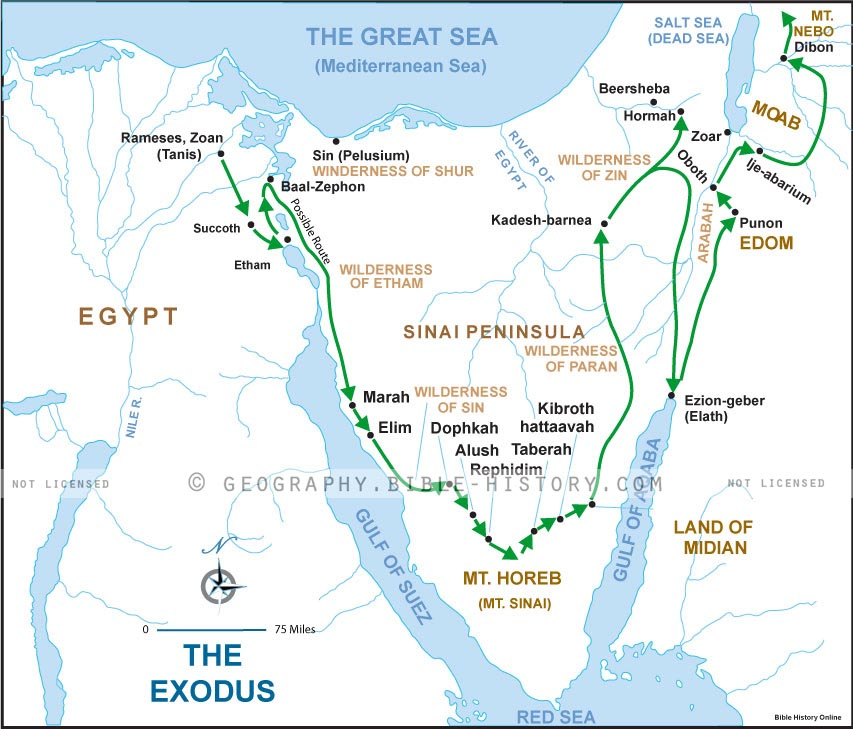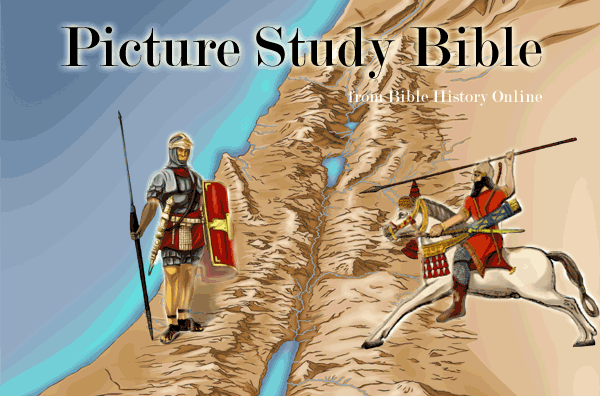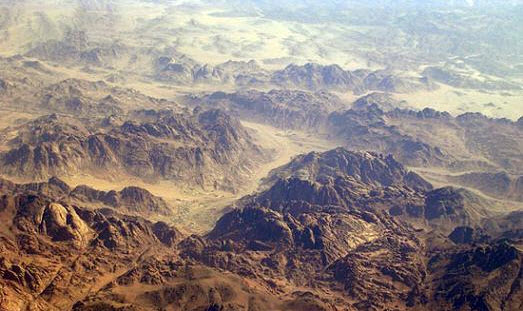Numbers 7:6 And Moses took the wagons and the oxen, and gave them unto the Levites. - Free Bible Online
Numbers 7:6 So Moses took the carts and the oxen, and gave them to the Levites.
6-9. Moses took the wagons and the oxen--The Hebrew word seems to
be fairly rendered by the word "wagons." Wheel carriages of some kind
are certainly intended; and as they were covered, the best idea we can
form of them is, that they bore some resemblance to our covered wagons.
That wheel carriages were anciently used in Egypt, and in what is now
Asiatic Turkey, is attested, not only by history, but by existing
sculptures and paintings. Some of these the Israelites might have
brought with them at their departure; and others, the skilful artisans,
who did the mechanical work of the tabernacle, could easily have
constructed, according to models with which they had been familiar.
Each wagon was drawn by two oxen, and a greater number does not seem to
have been employed on any of the different occasions mentioned in
Scripture. Oxen seem to have been generally used for draught in ancient
times among other nations as well as the Hebrews; and they continue
still to be employed in dragging the few carts which are in use in some
parts of Western Asia [KITTO].
gave them unto the Levites--The principle of distribution was natural
and judicious. The Merarites had twice the number of wagons and oxen
appropriated to them that the Gershonites had, obviously because, while
the latter had charge only of the coverings and hangings (the light but
precious and richly-embroidered drapery,
[Nu 4:24-26])
the former were appointed to transport all the heavy and bulky
materials (the boards, bars, pillars, and sockets) in short, all the
larger articles of furniture
[Nu 4:31, 32].
Whoever thinks only of the enormous weight of metal, the gold, silver,
brass, &c., that were on the bases, chapiters, and pillars, &c., will
probably come to the conclusion that four wagons and eight oxen were
not nearly sufficient for the conveyance of so vast a load. Besides,
the Merarites were not very numerous, as they amounted only to
thirty-two hundred men from thirty years and upward
[Nu 4:44];
and, therefore, there is reason to suppose that a much greater number
of wagons would afterwards be found necessary, and be furnished, than
were given on this occasion [CALMET]. Others, who
consider the full number of wagons and oxen to be stated in the sacred
record, suppose that the Merarites may have carried many of the smaller
things in their hands--the sockets, for instance, which being each a
talent weight, was one man's burden
(2Ki 5:23).
The Kohathites had neither wheeled vehicles nor beasts of burden
assigned them, because, being charged with the transport of the
furniture belonging to the holy place, the sacred worth and character
of the vessels entrusted to them (see on
Nu 4:15)
demanded a more honorable mode of conveyance. These were carried by
those Levites shoulder high. Even in this minute arrangement every
reflecting reader will perceive the evidence of divine wisdom and
holiness; and a deviation from the prescribed rule of duty led, in one
recorded instance, to a manifestation of holy displeasure, calculated
to make a salutary and solemn impression
(2Sa 6:6-13).
JFB.
Questions Related to this Verse
Where In Scripture Does It Talk About Wagons?Select a Chapter
-
Numbers 1 |
Numbers 2 |
Numbers 3 |
Numbers 4 |
Numbers 5 |
Numbers 6 |
Numbers 7 |
Numbers 8 |
Numbers 9 |
Numbers 10 |
Numbers 11 |
Numbers 12 |
Numbers 13 |
Numbers 14 |
Numbers 15 |
Numbers 16 |
Numbers 17 |
Numbers 18 |
Numbers 19 |
Numbers 20 |
Numbers 21 |
Numbers 22 |
Numbers 23 |
Numbers 24 |
Numbers 25 |
Numbers 26 |
Numbers 27 |
Numbers 28 |
Numbers 29 |
Numbers 30 |
Numbers 31 |
Numbers 32 |
Numbers 33 |
Numbers 34 |
Numbers 35 |
Numbers 36 |
Select a Book of the Bible
-
Genesis |
Exodus |
Leviticus |
Numbers |
Deuteronomy |
Joshua |
Judges |
Ruth |
1 Samuel |
2 Samuel |
1 Kings |
2 Kings |
1 Chronicles |
2 Chronicles |
Ezra |
Nehemiah |
Esther |
Job |
Psalms |
Proverbs |
Ecclesiastes |
Song of Solomon |
Isaiah |
Jeremiah |
Lamentations |
Ezekiel |
Daniel |
Hosea |
Joel |
Amos |
Obadiah |
Jonah |
Micah |
Nahum |
Habakkuk |
Zephaniah |
Haggai |
Zechariah |
Malachi |
Matthew |
Mark |
Luke |
John |
Acts |
Romans |
1 Corinthians |
2 Corinthians |
Galatians |
Ephesians |
Philippians |
Colossians |
1 Thessalonians |
2 Thessalonians |
1 Timothy |
2 Timothy |
Titus |
Philemon |
Hebrews |
James |
1 Peter |
2 Peter |
1 John |
2 John |
3 John |
Jude |
Revelation |
The Book of Numbers
Numbers 14:14 - And they will tell [it] to the inhabitants of this land: [for] they have heard that thou LORD [art] among this people, that thou LORD art seen face to face, and [that] thy cloud standeth over them, and [that] thou goest before them, by day time in a pillar of a cloud, and in a pillar of fire by night.
The Old Testament - A Brief Overview
Bible Survery - Numbers
Hebrew Name - Bemidhbar "in the wilderness"
Greek Name - Numbers "numberings"
Author - Moses
Date - From 1490-1451 BC Approximately
Theme - The Journey to the Promised Land
Types and Shadows - In Numbers Jesus is the Pillar of Cloud by
Day and the Pillar of Fire by Night
The book of Numbers takes its name from the account of the census that happened two times among the congregation of Israel in Numbers 1-4 and Numbers 26. The Greek title was used even though there is really no connection with the "numberings." The original Hebrew title which means "in the wilderness," is much more accurate, because the book of Numbers is it's really an accurate history of the events that happened during the period of wandering in the wilderness and not necessarily a book about statistics. The book of Numbers seems to follow naturally after the book of Leviticus in the order of the books of Moses in the Old Testament. After the children of Israel received the laws at Mount Sinai, they began the journey as described in the book of Exodus, and they were ready to march directly into the land of Canaan. The book of Numbers reveals how the children of Israel became prepared, and went to various trials, and how they were sinful in not trusting the Lord. Their sinful ways resulted in 37 years of wandering through the harsh wilderness. The book of Numbers concludes with the children of Israel once again at the edge of the land of Canaan, where they received instructions for the conquest of Canaan and the division of the land.
Quick Reference Map

Map of the Possible Route of the
Exodus (Click to Enlarge)
The principle divisions of the book are as follows:
Outline of the Book of Numbers
1) The preparation for the departure from Sinai (1:1-10:10). The events described here took place in nineteen days. In this time a census was taken of all men who were over twenty and who could serve in military efforts (1-4). The total obtained was 603,550 (1:46). This would indicate that the total population of the group was probably near three million. The census was followed by the cleansing and blessing of the congregation (5-6), the offering of gifts from the various tribes (7), the consecration of the Levites (8) and the observance of the Passover at Sinai (9:1-14).
2 ) The journey from Sinai to Kadesh-barnea (10:11-14:45). This section includes the account of the coming of the quail (11), the rebellion against Moses by Miriam and Aaron (12), and the fateful mission of the spies (13, 14).
3) The wanderings of the desert wilderness (15-19). As noted above, this covered a period of thirty-seven years, from the end of the second to the beginning of the fortieth year in the wilderness. Ch. 15 includes various laws and a record of capital punishment for Sabbath breaking. The rebellion of Korah (ch. 16) and the budding of Aaron's rod (ch. 17) are also mentioned here.
4 ) The history of the last year, from the second arrival of the Israelites at Kadesh till they reach "the plains of Moab by Jordan near Jericho" (20-36: 13). Notable sections of this are the story of Balaam (22:2-24:25), the zeal of Phinehas (ch. 25), the second census (26:1-51) , instructions for dividing the land (26:52-27: 11), the appointment of Joshua as Moses' successor (27: 12-23), various laws concerning offerings and vows ( 28-30 ), the war with Midian (ch. 31), the settlement of the tribes east of the Jordan (ch. 32), a review of the locations at which Israel had camped during their wanderings (33: 1-49), more instructions concerning the conquest and division of Canaan (33:50-34:29 ), the appointment of the cities of refuge (ch. 35) and instructions concerning the marriage of land-owning Israelite women (ch. 36).
ARCHAEOLOGYAncient Bronze Snake
Bronze Snake from Lachish, Late Bronze Age
Quick Reference Maps - Numbers
Numbers Resources
More About the Book of Numbers
Numbers in
the Picture Study Bible
Timeline of the Ancient
World
Back to the Old
Testament
Back to Bible
History Online
Bibliography Information
Free Bible Online Picture Study Bible, King James Version. New York: American Bible Society: www.free-bible.com, 1995-2013. Bible History Picture Study Bible. May 10, 2024.
- King James Bible Home
- Free Bible Home Page
- Bible Encyclopedia (ISBE)
- Online Bible (KJV)
- Naves Topical Bible
- Smith's Bible Dictionary
- Easton's Bible Dictionary
- Fausset's Bible Dictionary
- Matthew Henry Bible Commentary
- Hitchcock's Bible Dictionary
Read The Bible
- 1599 Geneva Bible (GNV)
- 21st Century King James Version (KJ21)
- American Standard Version (ASV)
- Amplified Bible (AMP)
- Amplified Bible, Classic Edition (AMPC)
- Authorized (King James) Version (AKJV)
- BRG Bible (BRG)
- Christian Standard Bible (CSB)
- Common English Bible (CEB)
- Complete Jewish Bible (CJB)
- Contemporary English Version (CEV)
- Darby Translation (DARBY)
- Disciples’ Literal New Testament (DLNT)
- Douay-Rheims 1899 American Edition (DRA)
- Easy-to-Read Version (ERV)
- English Standard Version (ESV)
- English Standard Version Anglicised (ESVUK)
- Evangelical Heritage Version (EHV)
- Expanded Bible (EXB)
- GOD’S WORD Translation (GW)
- Good News Translation (GNT)
- Holman Christian Standard Bible (HCSB)
- International Children’s Bible (ICB)
- International Standard Version (ISV)
- J.B. Phillips New Testament (PHILLIPS)
- Jubilee Bible 2000 (JUB)
- King James Version (KJV)
- Lexham English Bible (LEB)
- Living Bible (TLB)
- Modern English Version (MEV)
- Mounce Reverse Interlinear New Testament (MOUNCE)
- Names of God Bible (NOG)
- New American Bible (Revised Edition) (NABRE)
- New American Standard Bible (NASB)
- New American Standard Bible 1995 (NASB1995)
- New Catholic Bible (NCB)
- New Century Version (NCV)
- New English Translation (NET)
- New International Reader's Version (NIRV)
- New International Version - UK (NIVUK)
- New International Version (NIV)
- New King James Version (NKJV)
- New Life Version (NLV)
- New Living Translation (NLT)
- New Matthew Bible (NMB)
- New Revised Standard Version (NRSV)
- New Revised Standard Version Catholic Edition (NRSVCE)
- New Revised Standard Version, Anglicised (NRSVA)
- New Revised Standard Version, Anglicised Catholic Edition (NRSVACE)
- New Testament for Everyone (NTE)
- Orthodox Jewish Bible (OJB)
- Revised Geneva Translation (RGT)
- Revised Standard Version (RSV)
- Revised Standard Version Catholic Edition (RSVCE)
- The Message (MSG)
- The Voice (VOICE)
- Tree of Life Version (TLV)
- World English Bible (WEB)
- Worldwide English (New Testament) (WE)
- Wycliffe Bible (WYC)
- Young's Literal Translation (YLT)
Table of Contents
Main Menu
- Ancient Assyrian Social Structure
- Ancient Babylonia
- Ancient Canaan During the Time of Joshua
- Ancient History Timeline
- Ancient Oil Lamps
- Antonia Fortress
- Archaeology of Ancient Assyria
- Assyria and Bible Prophecy
- Augustus Caesar
- Background Bible Study
- Bible
- Biblical Geography
- Fallen Empires - Archaeological Discoveries and the Bible
- First Century Jerusalem
- Glossary of Latin Words
- Herod Agrippa I
- Herod Antipas
- Herod the Great
- Herod's Temple
- High Priest's in New Testament Times
- Jewish Literature in New Testament Times
- Library collection
- Map of David's Kingdom
- Map of the Divided Kingdom - Israel and Judah
- Map of the Ministry of Jesus
- Matthew Henry Bible Commentary
- Messianic Prophecy
- Nero Caesar Emperor
- Online Bible Maps
- Paul's First Missionary Journey
- Paul's Second Missionary Journey
- Paul's Third Missionary Journey
- Pontius Pilate
- Questions About the Ancient World
- Tabernacle of Ancient Israel
- Tax Collectors in New Testament Times
- The Babylonian Captivity
- The Black Obelisk of Shalmaneser
- The Books of the New Testament
- The Court of the Gentiles
- The Court of the Women in the Temple
- The Destruction of Israel
- The Fall of Judah with Map
- The History Of Rome
- The Incredible Bible
- The Jewish Calendar in Ancient Hebrew History
- The Life of Jesus in Chronological Order
- The Life of Jesus in Harmony
- The Names of God
- The New Testament
- The Old Testament
- The Passion of the Christ
- The Pharisees
- The Sacred Year of Israel in New Testament Times
- The Samaritans
- The Scribes
Ancient Questions
- How did the ancient Greeks and Romans practice medicine and treat illnesses?
- What were the major contributions of ancient Babylon to mathematics and astronomy?
- How did the ancient Persians create and administer their vast empire?
- What were the cultural and artistic achievements of ancient India, particularly during the Gupta Empire?
- How did ancient civilizations like the Incas and Aztecs build their remarkable cities and structures?
- What were the major trade routes and trading practices of the ancient world?
- What was the role of slavery in ancient societies like Rome and Greece?
- How did the ancient Mayans develop their sophisticated calendar system?
- What were the key events and significance of the Battle of Thermopylae in ancient Greece?
- What was life like for women in ancient Rome?
Bible Study Questions
- What does biblical archaeologist said about hieroglyphics?
- Where is the Negev where Abram went to in Genesis?
- What is the name of Ramallah in the Bible?
- How do we approach and study the historical and cultural context of biblical passages?
- What is the significance of the Psalms in personal and corporate worship?
- How do we discern and apply biblical principles to contemporary ethical issues?
- What is the biblical perspective on the nature of God's love and mercy?
- How do we interpret and understand apocalyptic literature in the Bible?
- What are the different covenants in the Bible and their significance?
- How do we grow in spiritual maturity and develop a deeper understanding of the Word?
About
Welcome to Free Bible: Unearthing the Past, Illuminating the Present! Step into a world where ancient history and biblical narratives intertwine, inviting you to explore the rich tapestry of human civilization.
Discover the captivating stories of forgotten empires, delve into the customs and cultures of our ancestors, and witness the remarkable findings unearthed by dedicated archaeologists.
Immerse yourself in a treasure trove of knowledge, where the past comes alive and illuminates our understanding of the present.
Join us on this extraordinary journey through time, where curiosity is rewarded and ancient mysteries await your exploration.
Recent posts
-

Personalized Baby Bibs for every Little
Every little one deserves to feel cherished and celebrated from the very start. These custom baby bibs, lovingly personalized with care, make the perf... -

The Art of Custom Home Design: Unveiling Wellcore Corporation's Expertise
In the ever-evolving panorama of contemporary production, customization reigns ultimate as a testament to innovation and the preference for a without ... -

Birthstones: A Sparkling Symphony of History, Symbolism, and Self-Expression
Birthstones, the ones fascinating gems linked to our delivery month, boast a records as rich and multifaceted because the jewels themselves. Their tal... -

The use of medicinal mushrooms by different religions of the world.
The integration of medicinal mushrooms into various religious practices around the world is a fascinating testament to their revered status across cul... -

Explore a Collection of Religious SVGs
Religious SVGs are versatile design elements that can be used to create a variety of personalized and meaningful projects. Whether you're looking to e...


